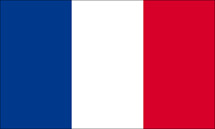
Bienvenue à la Cathédrale Saint Pierre et Saint Paul !
Attention : Il n'y a pas de boite ici. Pour valider cette earth, vous devrez observer la cathédrale qui se trouve devant vous et répondre aux questions à la fin du descriptif.
Loguez cette cache "Found it" et envoyez-moi vos propositions de réponses soit via mon profil, soit via la messagerie geocaching.com (Message Center), et je vous contacterai en cas de problème.
La ville de Troyes ayant connu un nouvel essor économique au XVIe siècle, de grands projets de construction nécessitèrent un volume très important de pierre à bâtir provenant de plusieurs carrières.
Les villages voisins de la ville de Troyes ont alors fourni de la craie, qui ne permettai pas de réalisations résistant suffisamment aux intempéries. Plusieurs chantiers utilisèrent alors des pierres de différentes provenances, selon la matière première disponible à l'époque et les caractéristiques techniques et esthétiques des matériaux, ainsi également que le coût de la pierre...
Je vais vous présenter ici quatre principaux types de pierres mises en oeuvre, parmi les calcaires.
Les calcaires sont des roches sédimentaires, facilement solubles. Dans l'aube, c'est la roche la plus courante qui compose les montagnes, les bassins, les plateaux et les plaines. Il est reconnaissable par sa teinte blanche et la présence de fossiles, le plus souvent.
Voici différents types de calcaires :
La craie :
Elle existe en abondance dans les villages voisins de Troyes. Il s'agit de gros bancs durs qui fournissent un matériau à grains fins. Leur teinte varie du gris clair au blanc. La craie, tendre, est utilisée pour la sculpture et à la stéréotomie. Sa faible densité la rend idéale pour la construction de voûtes. Malheureusement, celle-ci est peu résistante aux intempéries.
Les calcaires du Barséquanais et du Charourçois (Portlandien) :
Les plus proches se trouvent dans un rayon de 30 km autour de Troyes.
Il s'agit de calcaires durs, dont les pierres de taille proviennent d'un niveau de calcaire riche en fragments de coquilles d'huitres. Ce calcaire est de couleur beige à grise. Il est principalement employé dans sur les chantiers de fortification.
La pierre du Tonnerre :
C'est un calcaire très blanc, très pur. Epais jusqu'à 55 m dans la vallée de l'Armançon.
Le plus répendu est cryptocristallin, crayeux et tendre. Sa structure est grumelée.
Les carrières se situent dans le hameau d'Angy, à 60 km de Troyes.
Cette pierre est facile à tailler et très résistante.
La pierre de Savonnières :
C'est un calcaire oolithique, gris-beige, d'un grain très fin et d'une grande facilité de taille. Elle est utilisée depuis des siècles pour l'édification et la sculpture. Il est exploité dans les carrières de Savonnières-en-Perthois et Aulnois-en-Perthois (environ 90 km de Troyes).
Elle se prête facilement à la taille, et est aussi utilisée dans les réseaux de fenêtres.
Voici les questions pour valider cette earth :
1 - D'après vous, quel type de calcaire a été utilisé pour construire cette cathédrale ? Justifiez votre réponse.
2 - Envoyez une photo de vous, de votre GPS ou d'une inscription de votre pseudo avec une vue sur la Cathédrale. Bien entendu, vous n'avez pas besoin de figurer à l'image.
Merci pour votre visite, et bon geocaching !

Welcome to Saint Peter and Saint Paul Cathedral!
I propose here an earthcache. This type of cache does not require signing a physical logbook. To validate it, you will have to go through this page and observe around you, looking for the answers to the questions below.
Log this "Found it" cache and send me your suggested answers either via my profile or via geocaching.com messaging (Message Center), and I will contact you in the event of a problem.
The city of Troyes having experienced a new economic boom in the 16th century, major construction projects required a very large volume of building stone from several quarries.
The neighboring villages of the city of Troyes then provided chalk, which did not allow achievements sufficiently resistant to bad weather. Several sites then used stones from different sources, depending on the raw material available at the time and the technical and aesthetic characteristics of the materials, as well as the cost of the stone ...
I am going to present here four main types of stones used, among the limestones. Limestones are easily soluble sedimentary rocks. In dawn, it is the most common rock that makes up mountains, basins, plateaus and plains. It is recognizable by its white tint and the presence of fossils, most often.
Here are different types of limestone:
The chalk :
It exists in abundance in the neighboring villages of Troyes. These are large, hard beds that provide fine-grained material. Their hue varies from light gray to white. Chalk, soft, is used for sculpture and for stereotomy. Its low density makes it ideal for building vaults. Unfortunately, this one is not very resistant to bad weather.
Limestones of Barséquanais and Charourçois (Portlandien):
The closest are located within a radius of 30 km around Troyes.
These are hard limestones, the cut stones of which come from a level of limestone rich in fragments of oyster shells. This limestone is beige to gray in color. It is mainly used in fortification sites.
The Stone of Thunder:
It is a very white, very pure limestone. Thick up to 55 m in the Armançon valley.
The most common is cryptocrystalline, chalky and tender. Its structure is lumpy.
The quarries are located in the hamlet of Angy, 60 km from Troyes.
This stone is easy to cut and very resistant.
Savonnières stone:
It is an oolitic limestone, gray-beige, of a very fine grain and very easy to cut. It has been used for centuries for building and sculpture. It is exploited in the quarries of Savonnières-en-Perthois and Aulnois-en-Perthois (about 90 km from Troyes).
It lends itself easily to pruning, and is also used in window networks.
Here are the questions to validate this earth:
1 - According to you, what type of limestone was used to build this cathedral? Justify your answer.
2 - Send a photo of yourself, your GPS or an inscription of your nickname with a view of the Cathedral. Of course, you don't need to be in the picture.
Thanks for your visit, and happy geocaching!